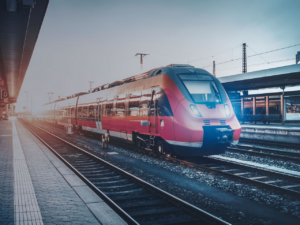South Africa’s rail network is extensive, primarily serving freight transport, with opportunities for further development in passenger services. The 2022 draft White Paper on National Rail Policy highlights the need for significant investment and modernisation. The government’s vision is to reposition rail as a critical component of the country’s economic infrastructure by 2050. This is underscored by the Passenger Rail Agency of South Africa’s (PRASA) ongoing efforts to improve commuter services, as well as Transnet’s initiatives to enhance freight efficiency.
South Africa’s only high-speed rail system, the Gautrain, which links Johannesburg, Pretoria, and OR Tambo International Airport, offers a glimpse into the potential for expanding high-speed rail networks across the country. While the Gautrain primarily serves a limited area, its success demonstrates that urban high-speed rail solutions can alleviate traffic congestion, reduce carbon emissions, and improve the overall efficiency of intercity travel. The lessons from the Gautrain’s development, funding model (public-private partnership), and operational challenges are pivotal in shaping future rail expansions. Transnet Freight Rail (TFR) plays a critical role in South Africa’s economy, but its market share remains under 10%. The government has acknowledged the need for investment in modern technologies such as Positive Train Control (PTC) and Automatic Train Operations (ATO) to reduce delays and accidents. Given South Africa’s mining and manufacturing reliance on freight logistics, adopting the latest technological trends could not only make rail transport more competitive but also enhance the broader economic landscape.
The Gautrain showcases South Africa’s potential to expand high-speed rail nationwide
It is clear that the railway industry is on the cusp of a technological revolution, driven by ongoing innovation and demand for reduced emissions and energy efficiency. Embracing these advancements will not only improve efficiency and safety, but also contribute to a more sustainable future. As we continue to push the boundaries of rail technology, the future of rail travel looks incredibly promising.
South Africa can take important lessons from such advanced types of rail technology, especially with its planned High-Speed Rail (HSR) framework as part of the draft National Rail Policy. The aim is to make rail a more affordable, competitive, and effective transport mode that provides the backbone of the country’s freight logistics and passenger mobility by 2050.
Erick Wessels, Sales Director, RS South Africa







